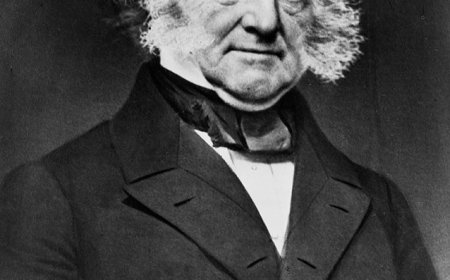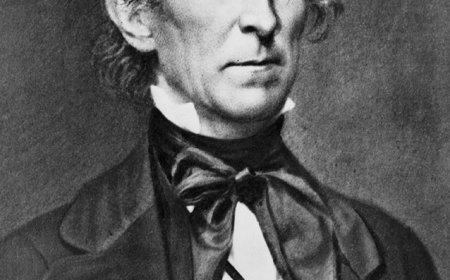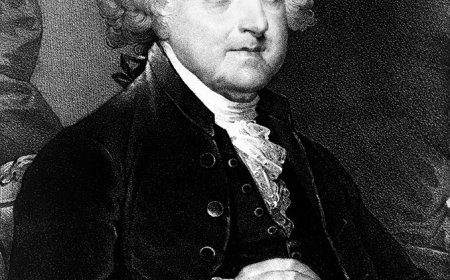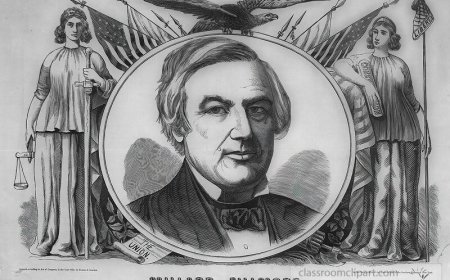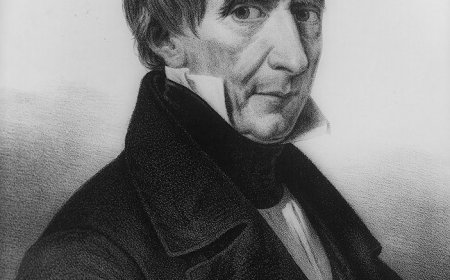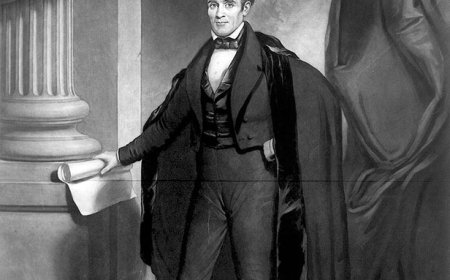John Quincy Adams Biography for Students | Early Life, Presidency & Legacy
Discover the life and legacy of John Quincy Adams, the 6th President of the United States and the son of Founding Father John Adams. Learn about his early diplomatic career, presidential struggles, and powerful return to Congress—plus vocabulary, fun facts, a quiz, and a kid-friendly summary.
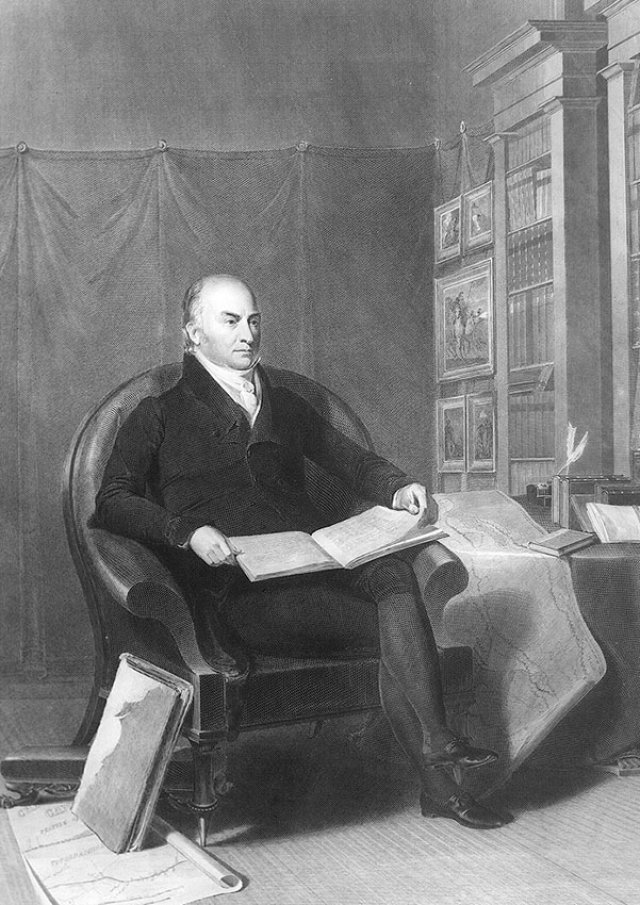
🇺🇸 John Quincy Adams Biography for Students | Early Life, Presidency & Legacy
🧭 Introduction
John Quincy Adams was the 6th President of the United States and the son of the second president, John Adams. He served as president from 1825 to 1829 and was known for his deep knowledge, honesty, and lifelong dedication to public service. Though his presidency had challenges, Adams made a lasting mark by promoting education, infrastructure, and later, by becoming a strong voice against slavery in Congress. He is remembered as one of America’s most intelligent and hardworking public servants.
👶 Early Life and Education
John Quincy Adams was born on July 11, 1767, in Braintree, Massachusetts (now Quincy). He grew up during the American Revolution, often traveling with his father, John Adams. At just 14 years old, he served as a secretary to an American diplomat in Europe, where he began learning languages and international politics.
He spoke French, Latin, and Dutch, and later learned German and Greek. He studied at schools in Paris, the Netherlands, and Russia before returning to the U.S. to attend Harvard College, graduating in 1787. He became a lawyer and quickly entered public service.
🏛 Political Career Before Presidency
John Quincy Adams had a long and successful diplomatic and political career before becoming president. He served in many roles, including:
-
U.S. Minister (Ambassador) to the Netherlands, Prussia, Russia, and Britain
-
U.S. Senator from Massachusetts
-
Key negotiator of the Treaty of Ghent, which ended the War of 1812
-
Secretary of State under President James Monroe
As Secretary of State, Adams was a leading architect of the Monroe Doctrine, which warned European powers not to interfere in the Western Hemisphere. He also helped the U.S. gain Florida from Spain through the Adams–Onís Treaty in 1819.
🇺🇸 Presidency Overview
Adams was elected president in 1824 in one of the most unusual elections in U.S. history. Although Andrew Jackson won more popular and electoral votes, he didn’t have a majority, so the House of Representatives had to decide. With support from Henry Clay, Adams was chosen president—an event Jackson’s supporters called a “corrupt bargain.”
Adams faced fierce opposition during his one term, making it hard to pass many of his plans. Still, he had a bold vision for the country, including:
-
A national university
-
More science and exploration programs
-
A network of roads, canals, and railways to connect the nation
Unfortunately, Congress blocked most of his proposals, and he lost the 1828 election to Andrew Jackson.
⚖️ Domestic Policies and Programs
As president, John Quincy Adams believed in using the federal government to improve the nation. His goals were ahead of their time and included:
-
Building national infrastructure
-
Supporting education and research
-
Promoting arts and science
Though many of his ideas were blocked, Adams’s belief in progress and innovation helped influence future leaders. He also refused to fire government workers for political reasons, believing jobs should be based on skill, not party loyalty.
🌍 Foreign Policy and Global Relations
Adams had already proven himself a skilled diplomat before becoming president. During his presidency, he continued to:
-
Keep peace with European countries
-
Promote fair trade and national growth
-
Stand by the principles of the Monroe Doctrine
His calm and intelligent approach helped the U.S. maintain strong relations without getting involved in foreign wars.
🧾 Legacy and Historical Impact
Though his presidency was seen as disappointing at the time, John Quincy Adams’s legacy grew after he left office. He returned to public service by becoming a member of the U.S. House of Representatives—the only former president to do so.
In Congress, he became a leading voice against slavery, fighting for freedom and justice. He also:
-
Opposed the “gag rule”, which stopped anti-slavery petitions in Congress
-
Defended the enslaved Africans in the famous Amistad case before the Supreme Court
Adams’s strong moral stand inspired abolitionists and future leaders like Abraham Lincoln.
👨👩👧 Personal Life and Family
John Quincy Adams married Louisa Catherine Johnson in 1797. She was the only First Lady born outside the U.S. (in England). The couple had four children, though only one, Charles Francis Adams, lived a long life and became a diplomat like his father.
Adams was serious, intellectual, and loved to read and write. He kept a diary for over 60 years! He was also a talented swimmer and often exercised, even in old age.
He died on February 23, 1848, after collapsing on the floor of the House of Representatives. His final words were, “This is the last of Earth. I am content.”
💬 Famous Quotes
“If your actions inspire others to dream more, learn more, do more and become more, you are a leader.”
This quote shows Adams’s belief in education and leading by example.
“Duty is ours; results are God’s.”
Adams believed people should do what is right, no matter the outcome.
💡 Interesting Facts About John Quincy Adams
-
He was the first son of a president to become president.
-
He could speak and read five different languages.
-
He often swam naked in the Potomac River for exercise.
-
He argued the Amistad case before the Supreme Court—and won.
-
He kept one of the longest diaries in U.S. history, with over 15,000 pages.
📚 Vocabulary Words
| Word | Definition |
|---|---|
| Diplomacy | The practice of managing relationships between countries |
| Corrupt Bargain | A secret deal that some believed unfairly influenced an election |
| Abolitionist | A person who wanted to end slavery |
| Infrastructure | Roads, bridges, canals, and other systems that help a country run |
| Gag Rule | A law that stopped Congress from discussing petitions about slavery |
✅ Interactive Quiz
Q1: What number president was John Quincy Adams?
A. 5th
B. 6th ✅
C. 7th
D. 8th
Q2: Who was John Quincy Adams’s father?
A. Thomas Jefferson
B. George Washington
C. John Adams ✅
D. James Madison
Q3: What major case did Adams argue after his presidency?
A. Brown v. Board
B. Amistad ✅
C. Marbury v. Madison
D. Miranda v. Arizona
Q4: What job did Adams have after he was president?
A. Mayor
B. General
C. Congressman ✅
D. Governor
Q5: What was the “corrupt bargain”?
A. A treaty with Britain
B. A land deal
C. A controversial election result ✅
D. A plan to end slavery
Scoring:
5/5 = ⭐ Legacy Leader
3–4 = 👍 History Buff
1–2 = 📘 Needs Review


















































